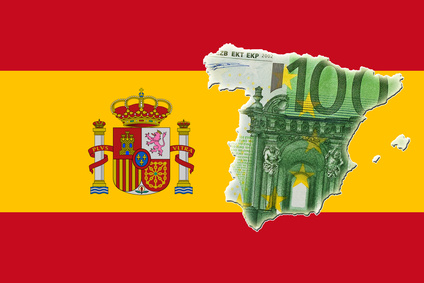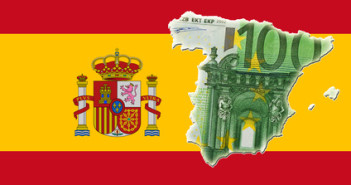The bailouts for Greece, Portugal and especially Ireland were supposed to prevent a bailout for Spain. While the Spanish and Irish economies differ in size, they went a similar way into the crisis. Will Spain have Ireland’s fate? Analysis of 8 similar and worrying similarities.
The Euro-zone’s fourth largest economy is double those of Ireland, Greece and Portugal combined and its also troubled by debt. So, Spain is seen as the final frontier: the EU bailout fund cannot capacitate a bailout of Spain. It’s too big to bail.
The previous bailouts were intended to prevent the disease from reaching Spain – to allow the country to continue raising money in the markets at sustainable yields. Indeed, the Spanish government made some serious steps and managed to convince investors that it is safe – the yields are still low. There’s a notion that Spain has decoupled itself from the ill economies. 
But the upcoming Greek default, and the signs of contagion in Ireland, trigger worries for Spain. Looking at Ireland and Spain, the similarities are scary:
- Real estate boom: Both had good years of a rises in real estate prices, as the European interest rate was low (adjusted to German needs?) and this sent prices higher and construction to the skies. At the peak, Spain’s construction sector was 13.3% of employment. This is close to nothing now. In both countries, people took cheap mortgages that were correlated to the one year euribor rate.
- Real estate bust: The economic crisis sent prices down, with many unsold homes in both countries. The Irish countryside is packed with unsold homes. So are the suburbs of Madrid and Spain’s coastline. At current demand levels, it will take Spain 6 years to get rid of the stock.
- Responsible governments: In both countries, the government’s deficit isn’t too bad. Ireland was doing alright. Spain’s debt to GDP ratio is below the European average.
- Irresponsible banks: In both countries, the banks were irresponsible with mortgages, pushing the boom and bust in real estate. Both were European versions of the American banks’ behavior.
- Unreliable banks: Not only were the banks irresponsible about their mortgages, they were overly optimistic about their financial situation, to say the least. In both countries, creative accounting is used to show improved balances. In both countries, the falling prices of real estate mean that their assets are worth less than reported.
- Growth?: Ireland is still deep into the recession. Spain managed to return to growth, but it’s almost nonexistent. Spain also took its time in exiting the recession, much later than most Euro-zone countries.
- Dangerous rate hikes: Trichet’s rate hike raises the cost of mortgages, reducing the income of households. This seriously endangers growth and can send more houses underwater.
- Government taking over banks: Being fair, there is some difference here between both countries. Ireland did it big time, and now the banks bringing the country down. In Spain, this is happening as well, but quite limited.
What do you think? Will Spain eventually need external help? Will the Portugal be the last domino?
For the current action in the currency markets, see the EUR/USD forecast.
